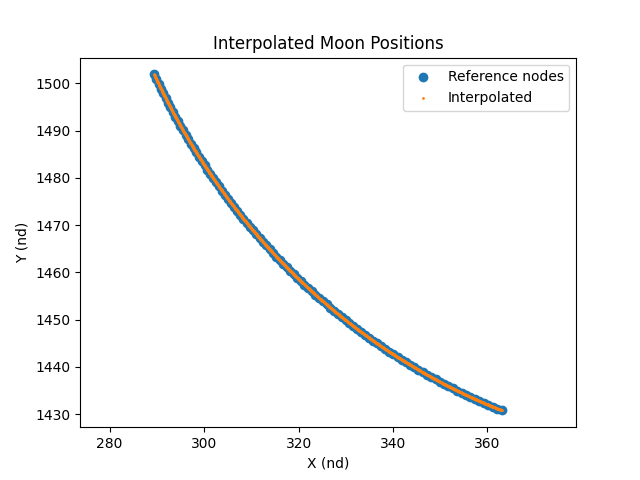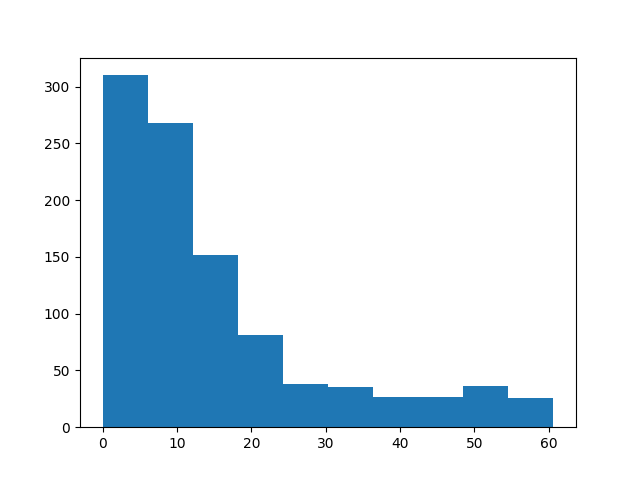Note
Go to the end to download the full example code.
Third Body Interpolation#
Interpolating the position of a third body for more efficient propagation with low error.
import matplotlib.pyplot as plt
import mirage as mr
target_body = ('jupiter', mr.jupiter)
Define a date range and a set of points to interpolate
npts = int(1e2)
dates, epsecs = mr.date_linspace(
mr.now(),
mr.now() + mr.days(mr.AstroConstants.moon_sidereal_period_days),
npts,
return_epsecs=True,
)
pts = target_body[1](dates)
fine_dates, fine_epsecs = mr.date_linspace(
dates[0], dates[-1], dates.size * 10, return_epsecs=True
)
Building an interpolator
mr.tic('Building interpolator')
interpolator = mr.SpiceInterpolator(target_body[0], dates)
mr.toc()
mr.tic('Interpolating')
pts_interp = interpolator(fine_epsecs)
mr.toc()
mr.tic('Computing true positions')
pts_fine_true = target_body[1](fine_dates)
mr.toc()
Building interpolator: 2.36e-03 seconds
Interpolating: 5.13e-05 seconds
Computing true positions: 1.59e-02 seconds
Plot the interpolated points
pts_nd = pts / mr.AstroConstants.moon_orbit_semimajor_axis
pts_interp_nd = pts_interp / mr.AstroConstants.moon_orbit_semimajor_axis
plt.figure()
plt.scatter(pts_nd[:, 0], pts_nd[:, 1], label='Reference nodes')
plt.scatter(pts_interp_nd[:, 0], pts_interp_nd[:, 1], s=1, label='Interpolated')
plt.axis('equal')
plt.title('Interpolated Moon Positions')
plt.xlabel('X (nd)')
plt.ylabel('Y (nd)')
plt.legend()

<matplotlib.legend.Legend object at 0x31b091340>
Computing the error of the interpolation
plt.figure()
pts_error = pts_interp - pts_fine_true
pts_error_norm = mr.vecnorm(pts_error)
plt.hist(pts_error_norm)
plt.show()

Total running time of the script: (0 minutes 0.262 seconds)
